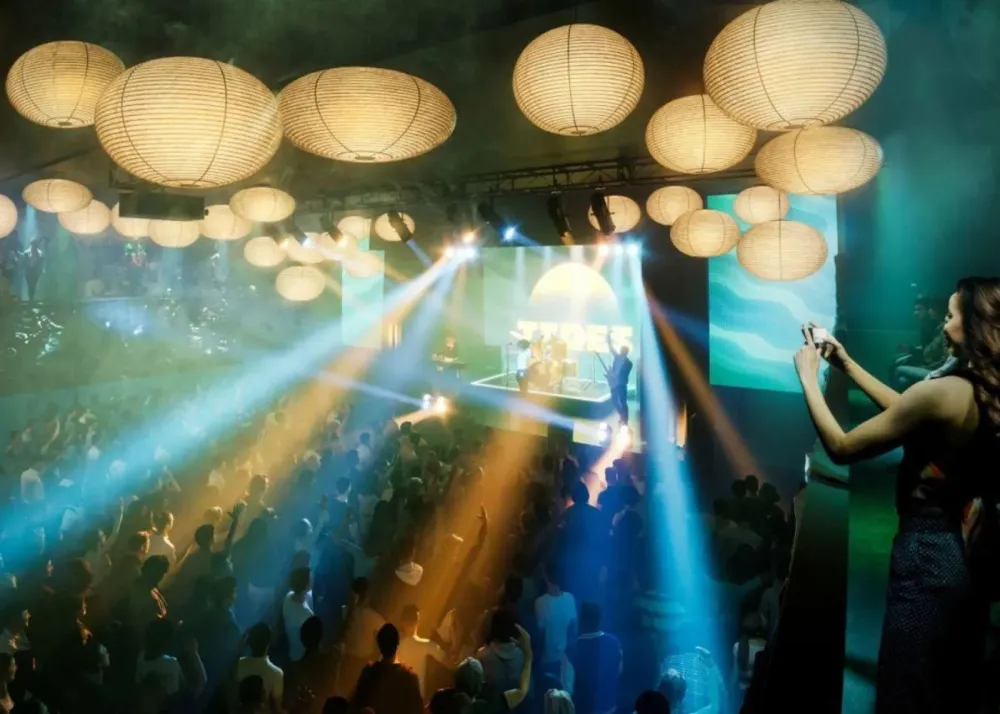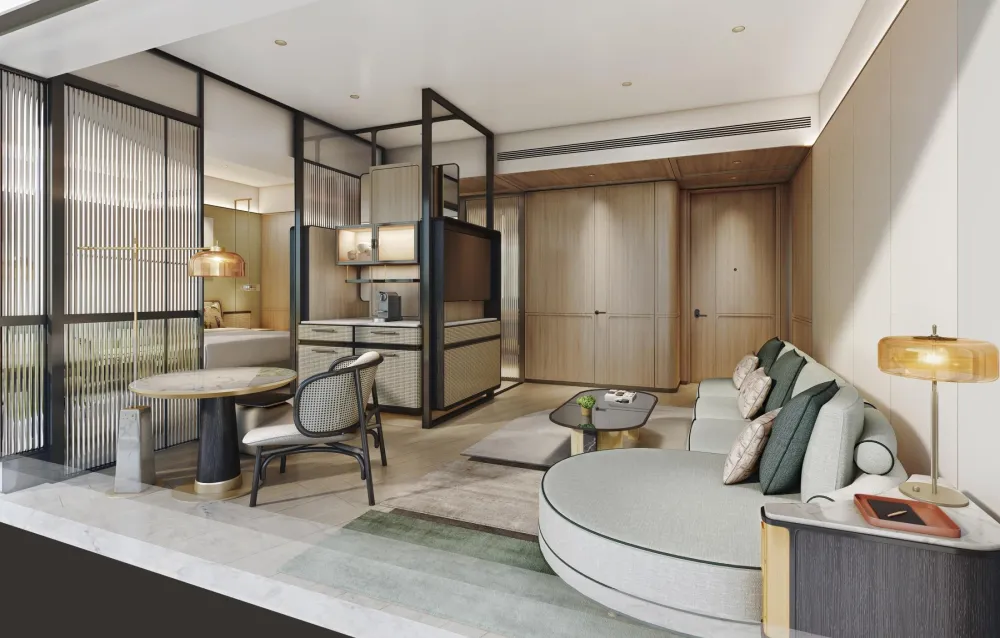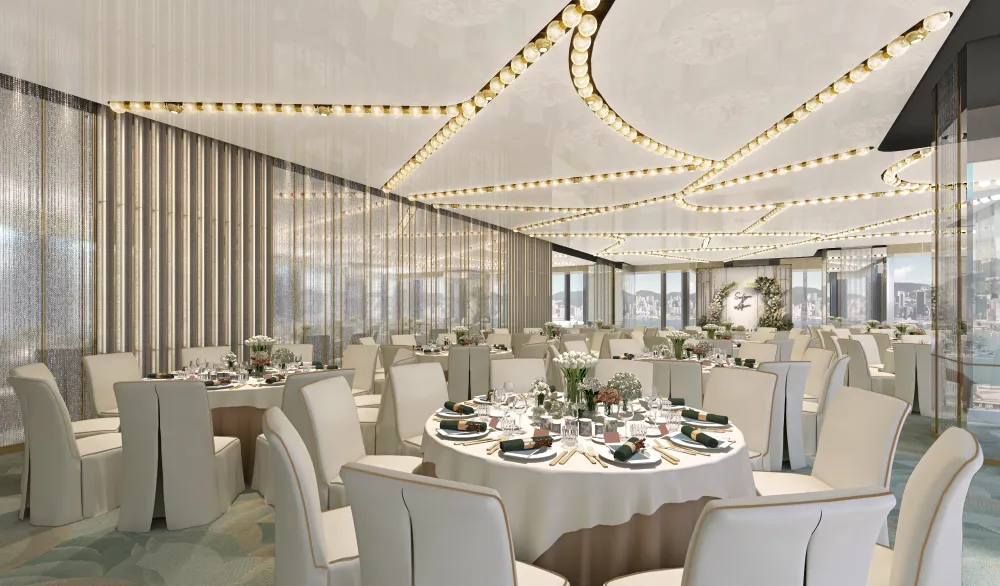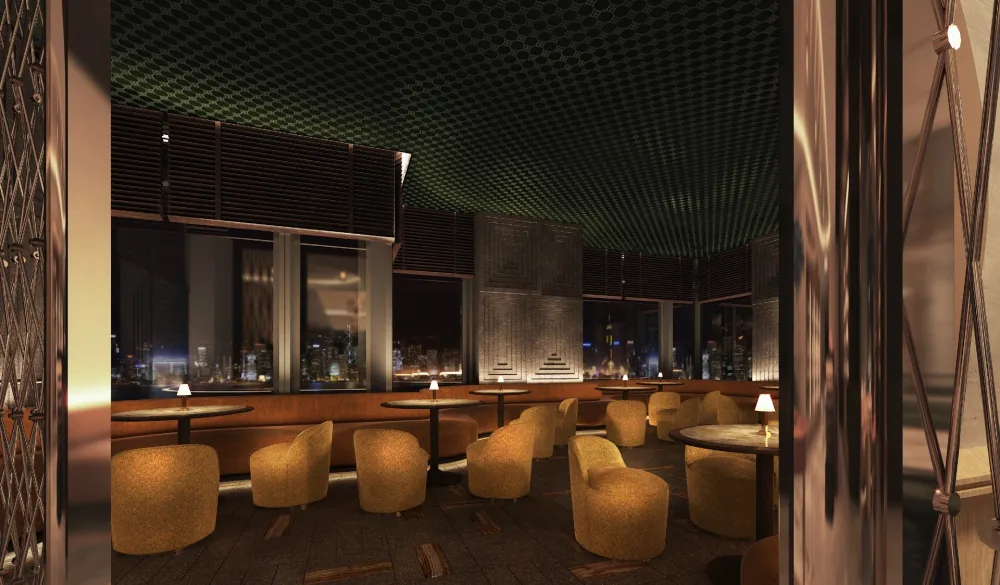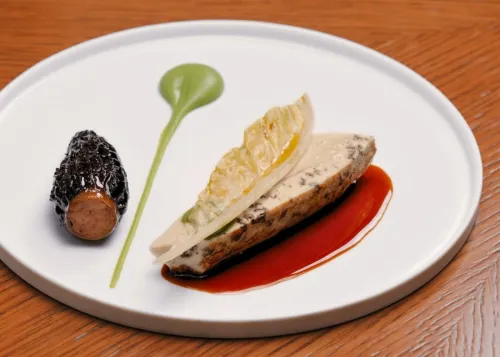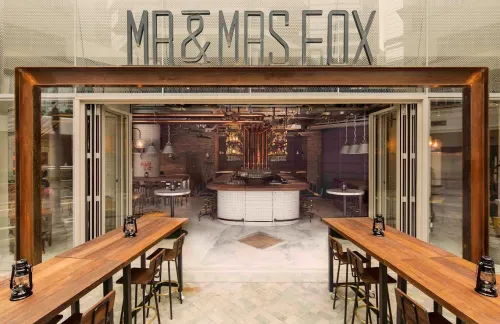Sheung Wan's Historic Tong Lau Transformed: Inside the 1QRW Project House

While the neighbourhood of Sheung Wan has earned a world-renowned reputation as a modern hipster haven of kitschy souvenir and antique shops, cool cafés, and trendy eateries, the unique area holds quite a history. Stroll down along Queens Road West until you reach its junction with Bonham Strand, and you’ll encounter a vestige from the area’s past – a historic cream-coloured tong lau (Hong Kong style shophouse-tenement building) adorned with green lettering that advertises Cantonese-style meats. Enter the building and you’ll be met with the stark contrast of a sleek coffee counter and seating, with colourful books arranged on industrial-looking shelves.
Operating since the summer of 2023, with the project already having extended its runtime into spring of 2024, this curious hybrid building is run by onebite Social (OBS), a local initiative that taps into the potential for urban third spaces to become a platform for strengthening community bonds and developing collaborative networks. Forming one of their ‘Project Houses,’ this tong lau has been constantly morphing to accommodate everything from being a chill space that’s open to all, to an exhibition space, an open library, and even a wellness studio.
The initiative allows the building to act as a sort of bridge between the daily life in Sheung Wan’s past and the needs of the neighbourhood residents today. On top of their myriad of independently led workshops and sharing sessions, the Sheung Wan Sewing Squad project in particular, had taken flight as one of the standout programmes unique to this location.
The Sewing Squad comprises local residents who use the Project House as a workshop and meeting place to turn their love for or curiosity towards sewing into a shared hobby, with some members also finding opportunities to work on unique upcycled Made in Sheung Wan products that were later put on sale as part of a special Christmas gift bundle curated by OBS.
Chatting with The Beat Asia, onebite Social’s Programme Manager Stephanie Cheung gives us a glimpse into the heritage of the building itself and exploring the goals that lie at heart of the Project House series, presenting a starting point that can inspire anyone into building connection in their own spaces.

What do we know about the history of the tong lau building at 1 Queen’s Road West?
This tong lau is a Grade 3 historical building, estimated to be built in 1926 as shown in the rates record, but we suspected it was built prior to that, possibly as early as 1913. It is a rare gem, given that it’s a pre-war tong lau that is taking over the street corner and has been kept rather intact.
Prior to 1987, it had always been a well-known local barbecue pork joint, Yau Kee Hop, run by the Chan family for at least a few decades. Even earlier on, the shop was shared between Yau Kee Hop and a store selling locally made Chinese rice liquor, as revealed by the columns’ advertising slogans.
What parts of the building’s past did you decide to keep or highlight? What about the parts you’ve changed, and why?
The building’s ownership was transferred around six years ago, and the current owner Vanessa never had any intent to demolish the building. On the contrary, the tong lau and its history was part of the reason she made the purchase.
After purchasing the building, Vanessa spent tremendous effort finding the right masters to refurbish the historical components left of the building, i.e. the façade and the terrazzo columns, to return to their previous glory. The interiors had already been completely changed to a modern-day set-up a long time ago by the previous owner.
What makes a good community project? What are onebite’s goals in creating these events and social experiments?
onebite Social has been activating vacant shops under our “Project House” initiative since 2017. First and foremost, we’d love to match these underutilised resources in our city with the needs of society. We hope that these pop-ups allow social organisations and collectives to foster new connections, test new project and service ideas, and demonstrate the possibilities of vacant shop fronts.
We feel that these low-threshold spaces, given their free and pop-up-friendly nature, create the affordances for experiments, allowing non-profits, social enterprises, artists, and community organisations of different sizes to easily test the water and spark imagination.

What major differences have you noticed between the Project Houses situated in different neighbourhoods?
Each neighbourhood gives a different flavour to Project House, no Project Houses were similar! Even in the same district of Wan Chai, the ones on Toy Street and Hennessy Road each had a very different flair! It’s difficult to say there is a single unique feature in each Project House, it all boils down to the people, the kaifongs (neighbourhood community) and collaborators who came into the space and brought in their assets.
How do the activities you introduce – for example, the Made in Sheung Wan sewing project – relate to the surrounding neighbourhood?
The Sheung Wan Sewing Squad is entirely a product of the neighbourhood; it wasn’t part of our plan.
It all started with a sewing enthusiast auntie, who brought her Singer machine to do handicrafts at the 1QRW Project House, attracting many more aunties who shared a similar interest and the right skills. We also met a passionate worker employed at a nearby fabric showroom (on Tung Street) who donated a great amount of high-quality fabric samples to us. We were simply a matchmaker putting materials and people together, throwing in some machines and our design capability - and the upcycled Made in Sheung Wan arm was launched.
At onebite Social, we always want to build on and connect with “assets” in the community. We are a strong believer that each neighbourhood has its assets, such as star characters, mum-and-pop shops, history, and stories. Therefore, around Christmas time last year, we created a gift set packed with Sheung Wan’s goodies.

What has been the parts or elements of Sheung Wan that have resonated with people the most?
Surely the historical building itself is the highlight, a feature not yet seen in our other Project Houses.
We believe that the building has served as an anchor for this edition of Project House. It was an important piece of memory for many elderly people, who recalled their childhood days purchasing at this shop. This building opened many more conversations, and therefore connections we believed would not be possible otherwise.
What do you hope participants of your social programmes take away from visiting the Project House?
A sense of community. Each Project House, situated on street level, created a cosy space for all. It wasn’t only a space for social organisations to foster connections, on a day-to-day basis anyone who came in could simply have a chat and meet someone new in the neighbourhood, breaking any boundaries of age, socio-economic status, occupation, and ethnicity.
How can individuals connect with their neighbourhood and surrounding community on a personal level?
In many communities, we can still find local, mum-and-pop run or independent stalls, and these are great places to start! Behind each store is a beautiful story and history rooted in the community, and a great connector to many more.
This interview has been edited for length and clarity.
Be sure to visit the 1 Queens Road West onebite Social Project House between now and April 19! Check out their daily programme by clicking here.
For more updates and new projects by onebite Social, check out their website here, and follow them on Instagram at @onebite.social
Get the latest curated content with The Beat Asia's newsletters. Sign up now for a weekly dose of the best stories, events, and deals delivered straight to your inbox. Don't miss out! Click here to subscribe.











